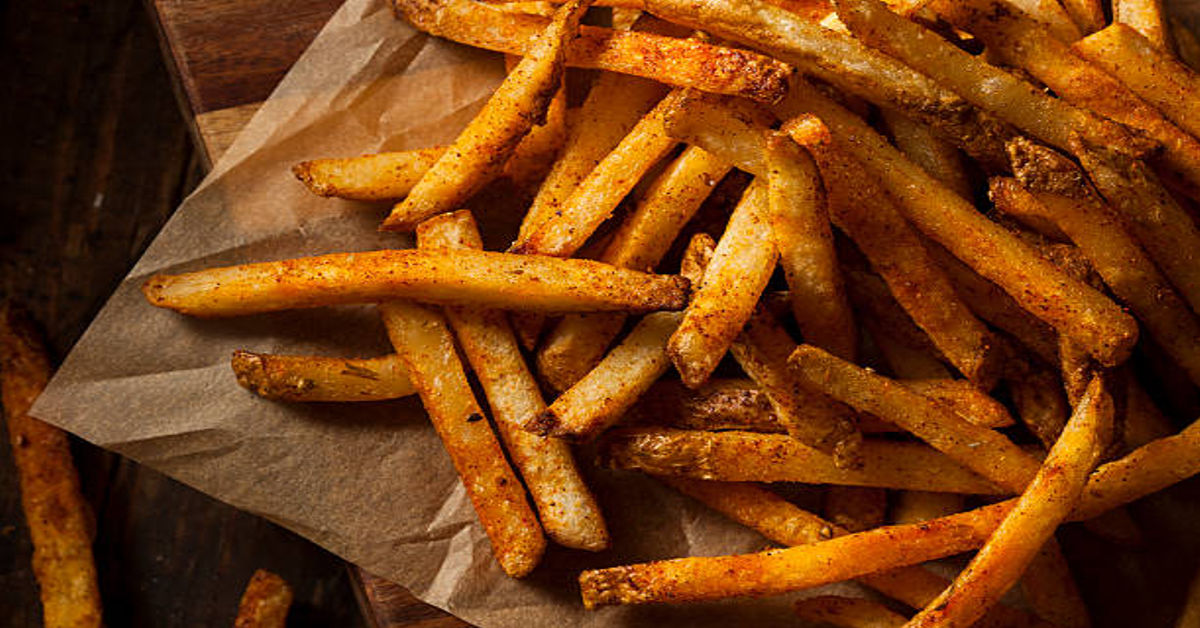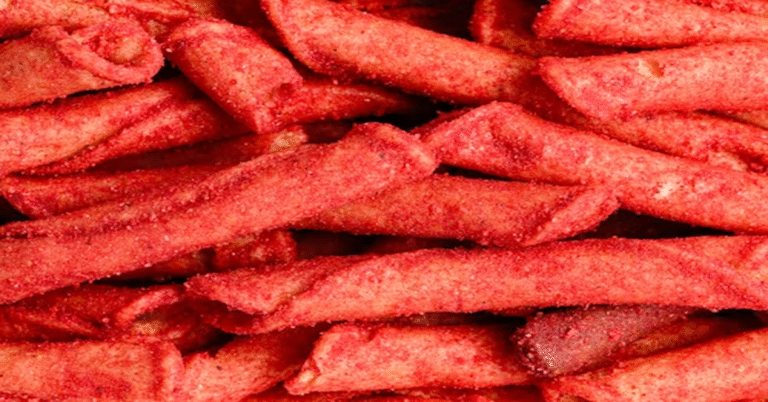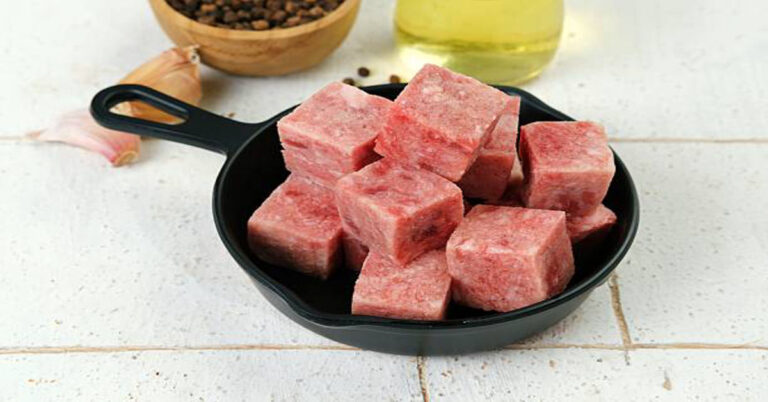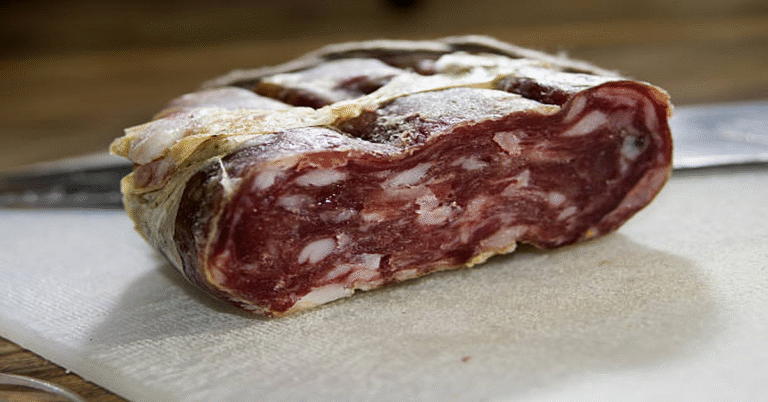Hot Fries: Crunch, Spice, and Snack Perfection
Few snacks have captured the imagination of both young and old as completely as Hot Fries. Whether you encounter them in vending machines, corner stores, or lunchboxes, their distinctive crunch and bold flavor are instantly recognizable. Hot Fries are more than just another processed snack; they represent a particular culture of convenience, flavor intensity, and comfort food satisfaction.
This article explores everything about Hot Fries—from their history and production process to their ingredients, nutritional profile, market appeal, and cultural significance. We’ll go deep into how they’re made, what makes them spicy, their evolution in the snack industry, and their impact on health and lifestyle.
Let’s crunch into the fascinating world of Hot Fries, one of the most enduring spicy snacks ever created.
1. Understanding What Hot Fries Are
Hot Fries are a type of extruded corn and potato snack known for their spicy, tangy seasoning and crispy texture. Unlike traditional French fries, which are deep-fried potatoes, Hot Fries are baked or fried from a dough mixture containing cornmeal, potato flour, and seasonings.
They belong to the same family as other extruded snacks like cheese curls or puffed sticks but are distinguished by their elongated fry-like shape and signature red-orange spicy coating. The flavor typically balances heat, tang, salt, and umami, appealing to people who love bold-tasting snacks.
Hot Fries are popular across various demographics, from students craving an after-school treat to adults seeking nostalgic comfort. Their shelf stability, vibrant color, and punchy flavor have made them a lasting favorite in the global snack market.
2. A Brief History of Hot Fries
The origins of Hot Fries can be traced back to the evolution of extruded snack technology in the mid-20th century. During this time, food engineers developed methods to produce airy, crunchy snacks using cornmeal and potato starch under high pressure and heat.
The Hot Fries we recognize today gained popularity in the United States during the 1980s and 1990s, a period that saw the rise of spicy, flavorful snacks designed to stand out from plain chips. They were especially known for offering a fiery twist on traditional fries—without the need for frying oil or refrigeration.
As consumer preferences shifted toward bold flavors, companies began experimenting with different heat levels and seasonings. Variations like cheese-flavored fries, chili lime fries, and barbecue fries followed, but Hot Fries consistently retained their dominance as the most popular spicy version.
Their rise coincided with the increasing cultural appreciation for spicy foods. As younger generations began embracing heat-heavy cuisines, from Mexican to Asian influences, Hot Fries found a permanent place in snack aisles around the world.
3. How Hot Fries Are Made: The Science of Crunch and Spice
Hot Fries owe their unique texture and flavor to extrusion cooking, a method that involves mixing, heating, and shaping ingredients under controlled pressure and temperature. Let’s break down this process step by step.
3.1 Ingredient Preparation
The base ingredients include:
- Cornmeal – provides the body and crunch.
- Potato flour or starch – adds density and familiar fry-like taste.
- Vegetable oil – contributes to crispiness and enhances flavor delivery.
- Seasoning blend – contains chili powder, paprika, salt, sugar, garlic powder, and artificial flavor enhancers.
These dry ingredients are mixed with water to create a dough-like consistency.
3.2 Extrusion Process
The dough is fed into an extruder machine, which subjects it to:
- High heat (about 150–200°C)
- High pressure (mechanically applied by rotating screws)
As the dough passes through, the moisture turns into steam, expanding the dough. It is then forced out through a shaping die, giving Hot Fries their long, narrow, fry-like appearance.
3.3 Baking or Frying
Depending on the manufacturer, the shaped fries are either:
- Lightly fried in oil for a crisp finish, or
- Oven-baked for lower oil content.
3.4 Seasoning Application
Once cooked, the fries pass through a rotating drum where they are coated with seasoning powder. A fine mist of oil helps the powder stick evenly to the surface.
3.5 Packaging
Finally, the Hot Fries are cooled, weighed, and sealed in foil-lined pouches that prevent moisture and preserve freshness. The bright red or orange powder becomes their visual signature—instantly recognizable to loyal fans.
4. Ingredients of Hot Fries
While the exact recipe may vary among brands, the core components remain similar. Below is a table outlining the typical ingredients used:
| Category | Ingredient Example | Function |
|---|---|---|
| Base Material | Cornmeal, Potato Starch | Forms the crispy structure |
| Oil Source | Sunflower Oil, Corn Oil | Adds texture and flavor |
| Flavor Base | Salt, Sugar | Balances taste |
| Spices & Seasoning | Paprika, Chili Powder, Garlic Powder | Creates heat and aroma |
| Coloring Agents | Red 40, Paprika Extract | Provides signature fiery color |
| Additives | Disodium Inosinate, Monosodium Glutamate (MSG) | Enhances umami flavor |
| Preservatives | Citric Acid | Increases shelf life |
Every element serves a purpose—from flavor intensity to mouthfeel. The secret to a great batch of Hot Fries lies in the balance between spice and texture.
5. Nutritional Profile of Hot Fries
Like most snack foods, Hot Fries are meant to be enjoyed occasionally rather than consumed in large quantities. Below is an estimated nutritional breakdown for a standard 1-ounce (28g) serving.
| Nutrient | Approx. Amount per Serving |
|---|---|
| Calories | 150–160 kcal |
| Total Fat | 9–10 g |
| Saturated Fat | 1.5 g |
| Carbohydrates | 17–19 g |
| Sugars | 1 g |
| Protein | 2 g |
| Sodium | 200–250 mg |
| Fiber | 1 g |
While relatively high in carbohydrates and sodium, moderate consumption can be part of an occasional indulgence, especially when balanced with a nutrient-rich diet.
6. Why People Love Hot Fries
The popularity of Hot Fries can be attributed to a combination of sensory, emotional, and cultural factors.
Taste and Texture Combination
Hot Fries combine crunch, spice, and salt in an addictive way. The sensory experience of biting into something crispy and hot creates a quick dopamine release, which our brains associate with satisfaction.
Convenience
Hot Fries are ready-to-eat, shelf-stable, and portable. Their packaging fits perfectly into lunchboxes, glove compartments, or backpacks—ideal for on-the-go snacking.
Flavor Intensity
The seasoning blends are intentionally designed to hit multiple flavor receptors: saltiness, sweetness, heat, and umami. This multidimensional taste keeps consumers reaching for more.
Affordability
Compared to premium snacks, Hot Fries are inexpensive, providing a flavorful treat accessible to everyone.
7. The Cultural Impact of Hot Fries
Hot Fries are not just snacks—they’re pop-culture icons. Over the decades, they’ve appeared in movies, TV shows, and social media trends. Their bright red powder and fiery flavor have become symbolic of youthful energy and casual enjoyment.
In Youth Culture
For many, Hot Fries are a nostalgic reminder of childhood—of sharing snacks at school, trading chips at lunch, or stopping by corner stores after class. Their vibrant packaging and bold flavor became associated with carefree fun.
In Modern Pop Culture
Influencers and food enthusiasts have popularized creative ways to eat Hot Fries—mixing them into sandwiches, crushing them as toppings, or using them in challenge videos. They’ve evolved from simple snacks into social media sensations.
In Global Markets
Although they began as an American phenomenon, variations of Hot Fries have appeared worldwide. In Asia, similar spicy stick snacks are infused with chili oil or pepper powder; in Latin America, they’re paired with lime or chili-lime flavors, showing the adaptability of the concept.
8. Health Considerations
While Hot Fries are undeniably tasty, understanding their nutritional and health implications is essential. Regular consumption of processed, fried, or baked snacks high in sodium and additives can affect long-term health.
Potential Concerns
- High Sodium Content: May contribute to hypertension if consumed excessively.
- Saturated Fat: Some versions contain oils that raise cholesterol levels.
- Artificial Additives: Coloring and flavoring agents may not suit sensitive individuals.
- Low Nutritional Density: Provides energy but limited vitamins or minerals.
Healthier Consumption Tips
- Pair Hot Fries with water instead of soda to reduce sodium impact.
- Consume smaller portions and savor them slowly.
- Combine with nutrient-rich foods—such as fruits or vegetables—to balance intake.
- Look for baked versions that reduce oil and fat content.
Moderation is key; when enjoyed responsibly, Hot Fries can remain part of a fun and balanced snack habit.
9. Comparing Hot Fries with Other Spicy Snacks
| Snack Type | Texture | Heat Level | Main Ingredient | Unique Feature |
|---|---|---|---|---|
| Hot Fries | Crunchy, airy | Medium-High | Cornmeal & Potato Flour | Fry-like shape and tangy spice |
| Spicy Chips | Crispy, thin | Moderate | Potato | Oil-based seasoning |
| Hot Puffs | Soft, melt-in-mouth | Mild | Cornmeal | Cheesy aftertaste |
| Chili Sticks | Dense, grainy | High | Wheat & Corn | Strong chili flavor |
| Tortilla Strips | Crisp, layered | Medium | Corn | Often lime-flavored |
Hot Fries stand out because they combine the crunch of chips with the body of fries and the bold flavor of spicy seasonings, creating a uniquely satisfying profile.
10. Production Economics and Market Presence
From a business perspective, Hot Fries are cost-effective to produce and transport. Their long shelf life and lightweight structure mean lower storage and shipping costs. Manufacturing involves minimal raw materials but high brand identity value, which translates to consistent profitability.
The demand for spicy snacks has grown steadily in recent years. As younger generations seek flavor adventure and sensory variety, brands have diversified Hot Fries into several variations—extra hot, lime-infused, barbecue, and cheesy-hot.
11. Environmental Considerations
The packaging of Hot Fries often uses metalized plastic film, which protects the product but poses environmental challenges. Manufacturers are now exploring biodegradable pouches and recyclable materials to reduce plastic waste.
In production, modern extrusion technology allows better energy efficiency and waste minimization, as leftover materials can be reprocessed into new batches, reducing overall food waste.
12. Creative Ways to Enjoy Hot Fries
While Hot Fries are perfect on their own, creative food lovers have found innovative ways to incorporate them into meals:
- Hot Fries Topping: Crushed and sprinkled over mac & cheese or baked potatoes for extra crunch.
- Burger Crunch Layer: Adds a spicy texture contrast in burgers or wraps.
- Snack Mix: Combined with nuts, pretzels, and popcorn for a spicy snack blend.
- Hot Fries Crust: Used as coating for fried chicken or baked tenders.
- Loaded Fries Substitute: Used in place of regular fries, topped with cheese, jalapeños, and sour cream.
These creative applications show that Hot Fries are more than a snack—they’re a versatile flavor ingredient.
13. Psychological Appeal of Spicy Snacks
The love for Hot Fries also has a psychological basis. The capsaicin in chili—the compound responsible for heat—triggers pain receptors in the mouth. The brain responds by releasing endorphins, which create a mild “feel-good” sensation.
This process explains why people find spicy snacks addictive; they not only stimulate taste but also evoke pleasure and excitement. The sensory thrill becomes part of the experience, turning Hot Fries into a comfort snack and stress reliever for many consumers.
14. Future Trends in the Hot Fries Industry
As consumer preferences evolve, the Hot Fries category is expected to embrace:
- Healthier oils like avocado or sunflower oil.
- Natural flavoring instead of artificial additives.
- Spice customization, offering adjustable heat levels.
- Eco-friendly packaging for sustainability.
- Plant-based protein enrichment, blending legume flour for extra nutrition.
The next generation of Hot Fries will likely combine indulgence with wellness, maintaining their beloved flavor while addressing modern health awareness.
15. Conclusion
Hot Fries are more than a snack—they’re an experience. From their origins in industrial food science to their place in pop culture, they embody a perfect mix of innovation, flavor, and nostalgia. Their fiery spice, crisp texture, and irresistible aroma continue to capture hearts across generations and continents.
Whether enjoyed during a road trip, shared among friends, or savored alone on a lazy afternoon, Hot Fries deliver the same fiery crunch every time. Their staying power lies in their balance of heat, texture, and familiarity—a reminder that sometimes, the simplest pleasures are the most memorable.
Frequently Asked Questions (FAQs)
1. What exactly are Hot Fries made of?
Hot Fries are made from a blend of cornmeal, potato starch, vegetable oil, and a spicy seasoning mix that typically includes paprika, chili powder, and salt. These ingredients are extruded, cooked, and coated with flavor.
2. Are Hot Fries healthier than regular chips?
Nutritionally, they’re similar to other chips in calories and sodium. However, baked versions of Hot Fries contain less oil and can be slightly lighter in fat.
3. Why are Hot Fries so addictive?
Their combination of crunch, spice, and salt triggers pleasure centers in the brain, releasing endorphins and dopamine that create a sense of satisfaction.
4. How should Hot Fries be stored for maximum freshness?
Keep them sealed in their original packaging or an airtight container, away from moisture and sunlight, to preserve crunch and flavor.
5. Can I make homemade Hot Fries?
Yes. By blending cornmeal, potato flour, spices, and baking them with light oil, you can create a homemade version that mimics the texture and taste of packaged Hot Fries—allowing you to control spice levels and ingredients.







